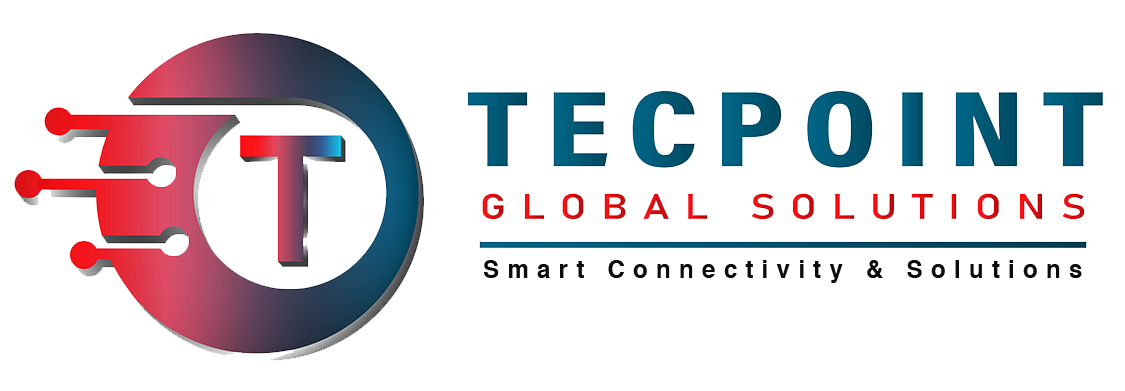In today’s dynamic work environment, the rise of remote work has become a defining trend. Millions of employees across the globe now leverage technology to collaborate and achieve results from the comfort (and flexibility) of their home offices. As TecPoint Global Solutions, a leading internet service provider (ISP), we understand the critical role a reliable and secure internet connection plays in empowering this remote workforce.
However, internet speed is just one piece of the puzzle. To thrive in a remote work environment, a well-equipped “tech stack” is essential. This article delves into the essential tools that every remote worker should have in their arsenal to ensure a productive, secure, and collaborative work experience.
1. Building a Foundation: The Unwavering Importance of Internet Speed
Before diving into specific tools, let’s acknowledge the cornerstone of a successful remote work setup: a robust internet connection. Here at TecPoint Global Solutions, we offer a variety of high-speed internet plans specifically designed for the demands of remote workers. These plans provide the bandwidth and stability needed to seamlessly upload and download files, participate in video conferences, and access cloud-based applications without frustrating lags or disruptions.
2. Mobile Hotspots: Unplugging Without Disconnecting
While a strong home internet connection is ideal, unforeseen circumstances can arise. For those who crave flexibility or anticipate potential outages, mobile hotspots offer a valuable safety net. Devices like Karma and Verizon Jetpack MiFi provide reliable internet access on the go. Alternatively, some smartphone plans allow users to activate their phones as hotspots, offering internet access to laptops and other devices in a pinch. However, be mindful that this option can drain your phone’s battery quickly and may require a specific data plan from your carrier.
3. Remote Desktop Software: Bridging the Physical Distance
Remote desktop software like Microsoft’s Remote Desktop client and TeamViewer acts as a virtual bridge, allowing remote workers to access and control a computer located elsewhere. This grants them the ability to work on their office PC as if they were physically present, accessing essential applications and files seamlessly. The choice of software depends on individual needs and preferences, with some offering additional features like secure file transfer capabilities.
4. Team Chat Apps: The Nerve Center of Collaboration
Effective communication is the lifeblood of any successful team, and remote work environments are no exception. Team chat apps like Slack and Microsoft Teams facilitate this crucial communication by providing features like instant messaging, file sharing, and video conferencing. These features allow remote teams to stay connected, share updates, brainstorm ideas, and collaborate in real-time, fostering a sense of togetherness even when physically apart.
5. Screen Sharing and Recording Tools: Visualizing Success
Collaboration often requires the ability to share visual information. Screen sharing and recording tools like Zappy, Zoom, and Slack can significantly enhance remote teamwork. These tools allow team members to share their computer screens in real-time, facilitating demonstrations, presentations, and troubleshooting sessions. Additionally, recording capabilities can be valuable for creating tutorials, capturing key meeting points, or sharing information with those who couldn’t attend a live session.
6. Video Conferencing Apps: Face-to-Face Connection in a Virtual World
While team chat apps and screen sharing tools are valuable, sometimes there’s no substitute for the power of face-to-face interaction. Video conferencing apps like Zoom and Microsoft Teams provide a platform for virtual meetings, allowing remote colleagues to see and hear each other in real-time. This personal connection can be vital for fostering team spirit, building trust, and maintaining a sense of normalcy in a remote work environment.
7. Online Office Suites: Productivity Without Borders
The days of bulky software installations are fading. Online office suites like Microsoft Office Online and Google Workspace offer a wealth of productivity tools accessible from any device with an internet connection. These suites typically include word processors, spreadsheet applications, presentation software, and collaborative editing features, allowing remote workers to create, edit, and share documents seamlessly in real-time.
8. Cloud Storage: Accessibility and Security in the Cloud
Gone are the days of relying solely on local storage devices. Cloud storage services like Google Drive, Dropbox, and OneDrive provide a secure and accessible location for storing essential files. This allows remote workers to access their documents from any device, share files with colleagues effortlessly, and ensure secure backups in case of hardware failure. Cloud storage also simplifies collaboration, as multiple users can access and edit documents simultaneously.
In conclusion, by equipping yourself with the essential tools outlined above and partnering with a reliable ISP like TecPoint Global Solutions to ensure a strong and secure internet connection, you can cultivate a remote work environment that empowers you to thrive. This tech stack will not only boost your productivity and collaboration with colleagues, but also provide the peace of mind that comes with knowing your valuable data is safe and accessible, ultimately giving you the edge you need to excel in today’s dynamic remote work landscape.

